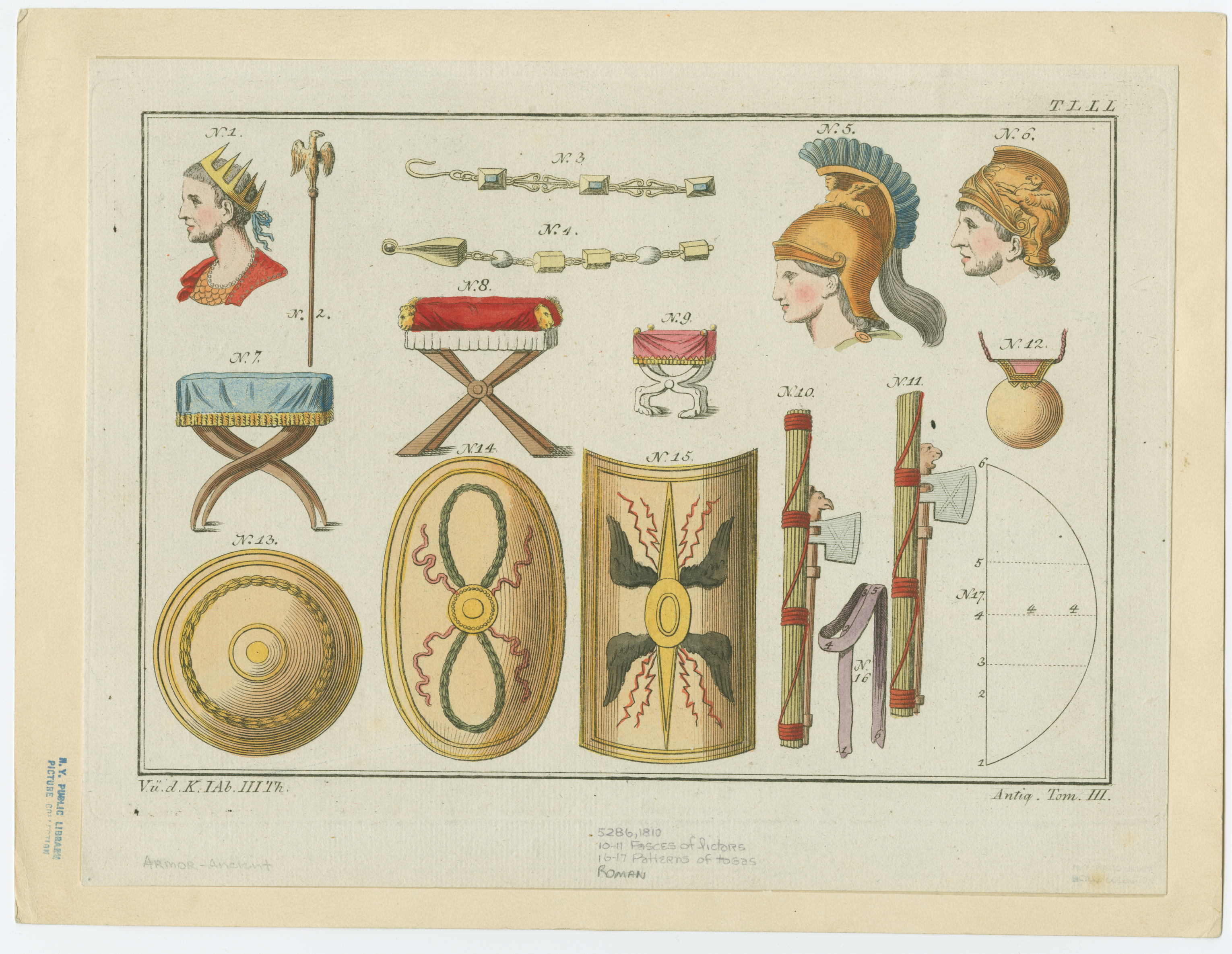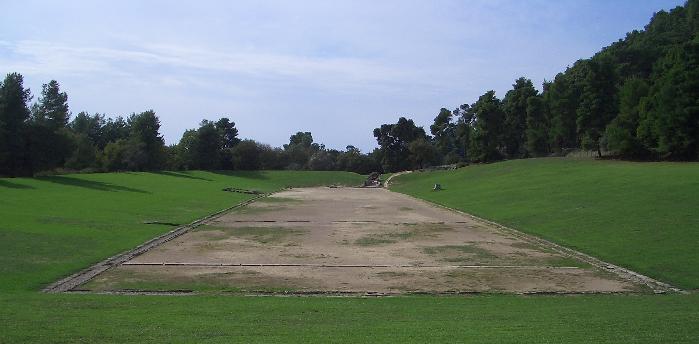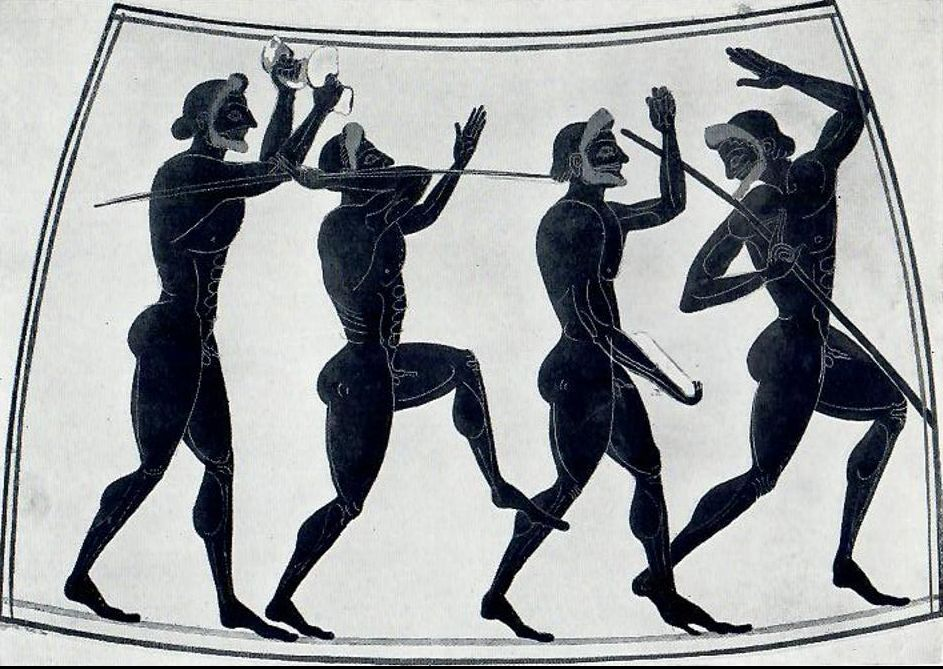|
Jovan Mikić
Jovan Mikić ( sh-Cyrl, Јован Микић; 13 May 1914 – 11 October 1944), nicknamed Spartak, was a Yugoslav record holder in athletics. He competed in the men's triple jump at the 1936 Summer Olympics. Biography Jovan Mikić was born on May 13, 1914, in Ópáva, Kingdom of Hungary (now Opovo, Serbia). He was the fourth child of his mother Darinka, a teacher, and father Alexander, a school supervisor. After World War I he moved with his family to Subotica. There he finished Gymnasium (school) and college. He studied at the Subotica Law School with a strong influence from Mija Mirković. In 1939 he was admitted as an assistant in market economy school. He then applied for the docent position, but was interrupted by World War II. Mikić spoke several languages from childhood, wrote Poetry, and was an above-average athlete. From 1932 till 1939 he was Yugoslavia's best pentathlete, decathlete, long jumper, discus thrower and javelin thrower. Twice a Balkan champion, Mikic was ... [...More Info...] [...Related Items...] OR: [Wikipedia] [Google] [Baidu] |
Opovo
Opovo (; ) is a town and municipality located in the South Banat District of the autonomous province of Vojvodina, Serbia. The town has a population of 4,147, while Opovo municipality has 9,462 inhabitants (2022 census). Name In Serbian, the town is known as ''Opovo'' (Опово), in German as ''Opowa'', in Hungarian as ''Ópáva'', in Croatian as ''Opovo'', in Romanian as ''Opovo'', in Slovak as ''Opovo'', and in Rusyn as Опово. History There are traces from Neolithic and Roman periods in this area. An older settlement named Želj existed at this locality during medieval Hungarian and later Ottoman administration. During Hungarian administration it was part of the Kovin county and during Ottoman administration part of the Temeşvar Eyalet. Southern part of modern Opovo is still called Želj by local inhabitants. According to historical sources, modern Opovo was mentioned first in 1672-1690 and it was populated by Serbs. They lived in the houses made from mud. Durin ... [...More Info...] [...Related Items...] OR: [Wikipedia] [Google] [Baidu] |
Pentathlete
A pentathlon is a contest featuring five events. The name is derived from Greek language, Greek: combining the words ''pente'' (five) and -''athlon'' (competition) (). The first pentathlon was documented in Ancient Greece and was part of the Ancient Olympic Games. Five events were contested over one day for the Ancient Olympic pentathlon, starting with the long jump, javelin throwing, and discus throwing, followed by the ''Stadion (ancient sports), stadion'' (a short foot race) and amateur wrestling, wrestling. Pentathletes were considered to be among the most skilled athletes, and their training was often part of military service—each of the five events in the pentathlon was thought to be useful in war or battle. With the revival of the Olympic Games in the modern era, the pentathlon returned in two formats. The athletics pentathlon was a modern variation on the original events, with a competition over five track and field events. The modern pentathlon, invented by Pierre de Co ... [...More Info...] [...Related Items...] OR: [Wikipedia] [Google] [Baidu] |
1914 Births
This year saw the beginning of what became known as the First World War, after Archduke Franz Ferdinand of Austria, heir to the Austrian throne was Assassination of Archduke Franz Ferdinand, assassinated by Serbian nationalist Gavrilo Princip. It also saw the first airline to provide scheduled regular commercial passenger services with heavier-than-air aircraft, with the St. Petersburg–Tampa Airboat Line. Events January * January 1 – The St. Petersburg–Tampa Airboat Line in the United States starts services between St. Petersburg, Florida, St. Petersburg and Tampa, Florida, becoming the first airline to provide scheduled regular commercial passenger services with heavier-than-air aircraft, with Tony Jannus (the first federally-licensed pilot) conveying passengers in a Benoist XIV flying boat. Abram C. Pheil, mayor of St. Petersburg, is the first airline passenger, and over 3,000 people witness the first departure. * January 11 **The Sakurajima volcano in Japan ... [...More Info...] [...Related Items...] OR: [Wikipedia] [Google] [Baidu] |
Kingdom Of Hungary (1920–1946)
The Kingdom of Hungary referred to retrospectively as the Regency and the Horthy era, existed as a country from 1920 to 1946 under the rule of Miklós Horthy, Regent of Hungary, who officially represented the Holy Crown of Hungary, Hungarian monarchy. In reality there was no king, and attempts by Charles I of Austria, King Charles IV to return to the throne shortly before his death were Charles IV of Hungary's attempts to retake the throne, prevented by Horthy. Hungary under Horthy was characterized by its Conservatism, conservative, Nationalism, nationalist, and fiercely Anti-communism, anti-communist character; some historians have described this system as Para-fascism, para-fascist. The government was based on an unstable alliance of conservatives and right-wingers. Foreign policy was characterized by revisionism—the total or partial revision of the Treaty of Trianon, which had seen Hungary lose over 70% of its Kingdom of Hungary, historic territory along with over three mil ... [...More Info...] [...Related Items...] OR: [Wikipedia] [Google] [Baidu] |
Bačka
Bačka ( sr-Cyrl, Бачка, ) or Bácska (), is a geographical and historical area within the Pannonian Plain bordered by the river Danube to the west and south, and by the river Tisza to the east. It is divided between Serbia and Hungary. Most of the area is located within the Vojvodina region in Serbia and Novi Sad, the capital of Vojvodina, lies on the border between Bačka and Syrmia. The smaller northern part of the geographical area is located within Bács-Kiskun County in Hungary. Name According to Serbian historians, Bačka is a typical Slavic name form, created from "Bač" (name of historical town in Bačka) and suffix "ka" (which designates "the land that belongs to Bač"). The name of " Bač" (Bács) town is of uncertain origin and its existence was recorded among Vlachs, Slavs and Hungarians in the Middle Ages. The origin of the name could be Paleo-Balkanic, Romanian, Slavic, or Old Turkic. According to Hungarian historians, the denominator of the landscape ... [...More Info...] [...Related Items...] OR: [Wikipedia] [Google] [Baidu] |
Hungarian Occupation Of Yugoslav Territories
During World War II, the Kingdom of Hungary engaged in the military occupation, then annexation, of the Bačka, Baranja, Međimurje and Prekmurje regions of the Kingdom of Yugoslavia. These territories had all been under Hungarian rule prior to 1920, and had been transferred to Yugoslavia as part of the post-World War I Treaty of Trianon. They now form part of several states: Yugoslav Bačka is now part of Vojvodina, an autonomous province of Serbia, Yugoslav Baranja and Međimurje are part of modern-day Croatia, and Yugoslav Prekmurje is part of modern-day Slovenia. The occupation began on 11 April 1941 when 80,000 Hungarian troops crossed the Yugoslav border in support of the German-led Axis invasion of Yugoslavia that had commenced five days earlier. There was some resistance to the Hungarian forces from Serb Chetnik irregulars, but the defences of the Royal Yugoslav Army had collapsed by this time. The Hungarian forces were indirectly aided by the local ''Volksdeutsche' ... [...More Info...] [...Related Items...] OR: [Wikipedia] [Google] [Baidu] |
Yugoslav Partisans
The Yugoslav Partisans,Serbo-Croatian, Macedonian language, Macedonian, and Slovene language, Slovene: , officially the National Liberation Army and Partisan Detachments of Yugoslavia sh-Latn-Cyrl, Narodnooslobodilačka vojska i partizanski odredi Jugoslavije (NOV i POJ), Народноослободилачка војска и партизански одреди Југославије (НОВ и ПОЈ); ; (often shortened as the National Liberation Army sh-Latn-Cyrl, Narodnooslobodilačka vojska (NOV), Народноослободилачка војска (НОВ); ; ) was the Communist Party of Yugoslavia, communist-led Anti-fascism, anti-fascist resistance to the Axis powers (chiefly Nazi Germany) in occupied Yugoslavia during World War II. Led by Josip Broz Tito, the Partisans are considered to be Europe's most effective anti-Axis powers, Axis Resistance during World War II, resistance movement during World War II. Primarily a Guerrilla warfare, guerrilla force at its ince ... [...More Info...] [...Related Items...] OR: [Wikipedia] [Google] [Baidu] |
Anti-fascism
Anti-fascism is a political movement in opposition to fascist ideologies, groups and individuals. Beginning in European countries in the 1920s, it was at its most significant shortly before and during World War II, where the Axis powers were opposed by many countries forming the Allies of World War II and dozens of resistance movements worldwide. Anti-fascism has been an element of movements across the political spectrum and holding many different political positions such as anarchism, communism, pacifism, republicanism, social democracy, socialism and syndicalism as well as centrist, conservative, liberal and nationalist viewpoints. Fascism, a far-right ultra-nationalistic ideology best known for its use by the Italian Fascists and the German Nazis, became prominent beginning in the 1910s. Organization against fascism began around 1920. Fascism became the state ideology of Italy in 1922 and of Germany in 1933, spurring a large increase in anti-fascist action, including ... [...More Info...] [...Related Items...] OR: [Wikipedia] [Google] [Baidu] |
Novi Sad
Novi Sad ( sr-Cyrl, Нови Сад, ; #Name, see below for other names) is the List of cities in Serbia, second largest city in Serbia and the capital of the autonomous province of Vojvodina. It is located in the southern portion of the Pannonian Plain on the border of the Bačka and Syrmia geographical regions. Lying on the banks of the Danube river, the city faces the northern slopes of Fruška Gora and it is the fifth largest of all List of cities and towns on the river Danube, cities on the river Danube. It is the largest Danube city that is not the capital of an independent state. , the population of the city proper area totals 260,438 while its urban area (including the adjacent settlements of Petrovaradin and Sremska Kamenica) comprises 306,702 inhabitants. According to the city's Informatika Agency, Novi Sad had 415,712 residents in 2025. Novi Sad was founded in 1694, when Serb merchants formed a colony across the Danube from the Petrovaradin Fortress, a strategic Habsb ... [...More Info...] [...Related Items...] OR: [Wikipedia] [Google] [Baidu] |
Olympic Games
The modern Olympic Games (Olympics; ) are the world's preeminent international Olympic sports, sporting events. They feature summer and winter sports competitions in which thousands of athletes from around the world participate in a Multi-sport event, variety of competitions. The Olympic Games, Open (sport), open to both amateur and professional athletes, involves more than 200 teams, each team representing a sovereign state or territory. By default, the Games generally substitute for any world championships during the year in which they take place (however, each class usually maintains its own records). The Olympics are staged every four years. Since 1994 Winter Olympics, 1994, they have alternated between the Summer Olympic Games, Summer and Winter Olympics every two years during the four-year Olympiad. Their creation was inspired by the ancient Olympic Games, held in Olympia, Greece, from the 8th century BC to the 4th century AD. Baron Pierre de Coubertin founded the Int ... [...More Info...] [...Related Items...] OR: [Wikipedia] [Google] [Baidu] |
Balkan
The Balkans ( , ), corresponding partially with the Balkan Peninsula, is a geographical area in southeastern Europe with various geographical and historical definitions. The region takes its name from the Balkan Mountains that stretch throughout the whole of Bulgaria. The Balkan Peninsula is bordered by the Adriatic Sea in the northwest, the Ionian Sea in the southwest, the Aegean Sea in the south, the Turkish straits in the east, and the Black Sea in the northeast. The northern border of the peninsula is variously defined. The highest point of the Balkans is Musala, , in the Rila mountain range, Bulgaria. The concept of the Balkan Peninsula was created by the German geographer August Zeune in 1808, who mistakenly considered the Balkan Mountains the dominant mountain system of southeastern Europe spanning from the Adriatic Sea to the Black Sea. In the 19th century the term ''Balkan Peninsula'' was a synonym for Rumelia, the parts of Europe that were provinces of the Ottoman E ... [...More Info...] [...Related Items...] OR: [Wikipedia] [Google] [Baidu] |
Javelin Throw
The javelin throw is a track and field event where the javelin, a spear about in length, is thrown as far as possible. The javelin thrower gains momentum by running within a predetermined area. Javelin throwing is an event of both the men's decathlon and the women's heptathlon. History The javelin throw was added to the Ancient Olympic Games as part of the pentathlon in 708 BC. It included two events, one for distance and the other for accuracy in hitting a target. The javelin was thrown with the aid of a thong (''Amentum, ankyle'' in Greek) that was wound around the middle of the shaft. Athletes held the javelin by the ''ankyle'', a leather strap around the shaft, so when they released the javelin, the unwinding of the thong gave the javelin a spiral trajectory. Throwing javelin-like poles into targets was revived in Germany and Sweden in the early 1870s. In Sweden, these poles developed into the modern javelin, and throwing them for distance became a common event ther ... [...More Info...] [...Related Items...] OR: [Wikipedia] [Google] [Baidu] |








